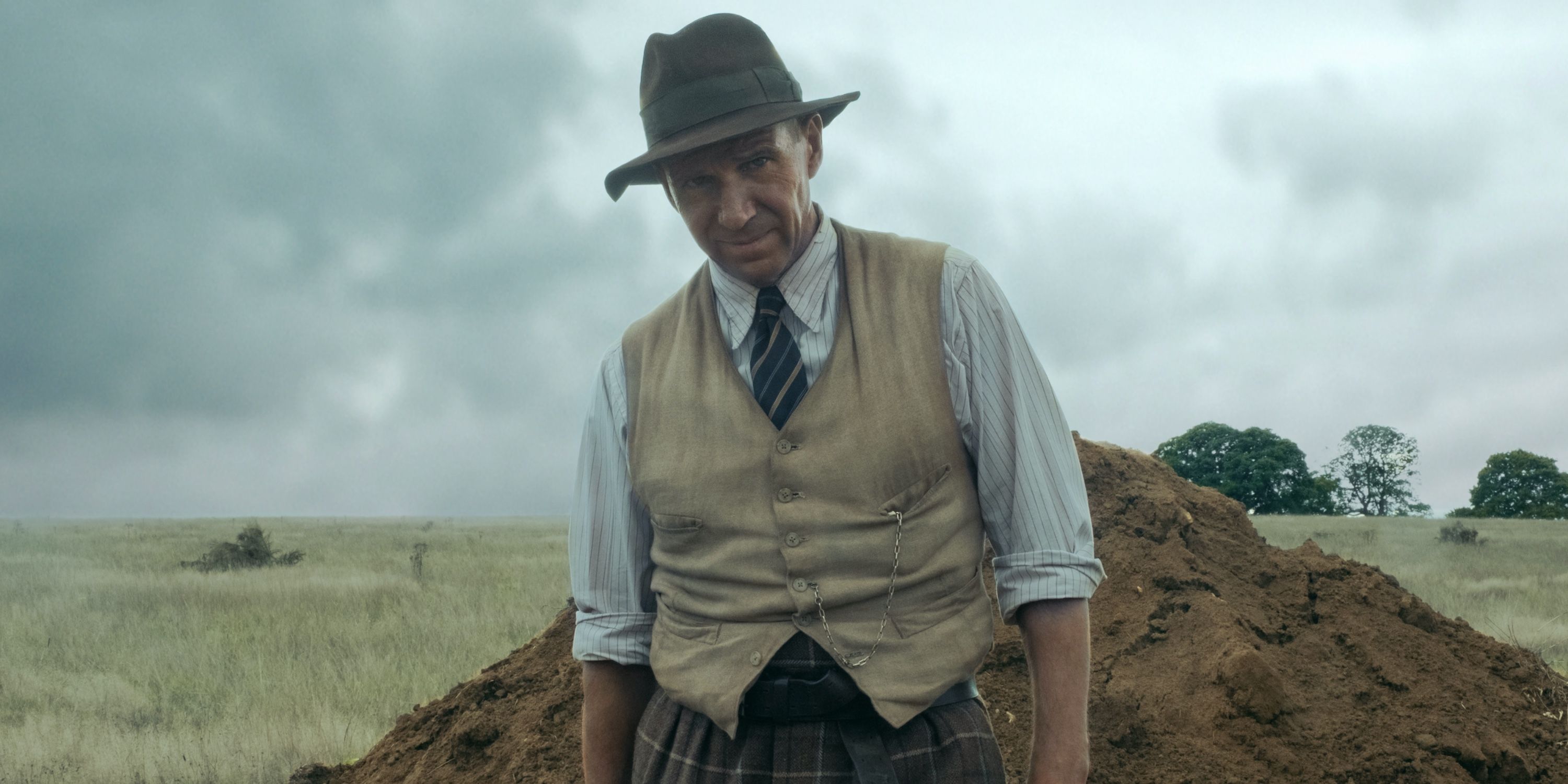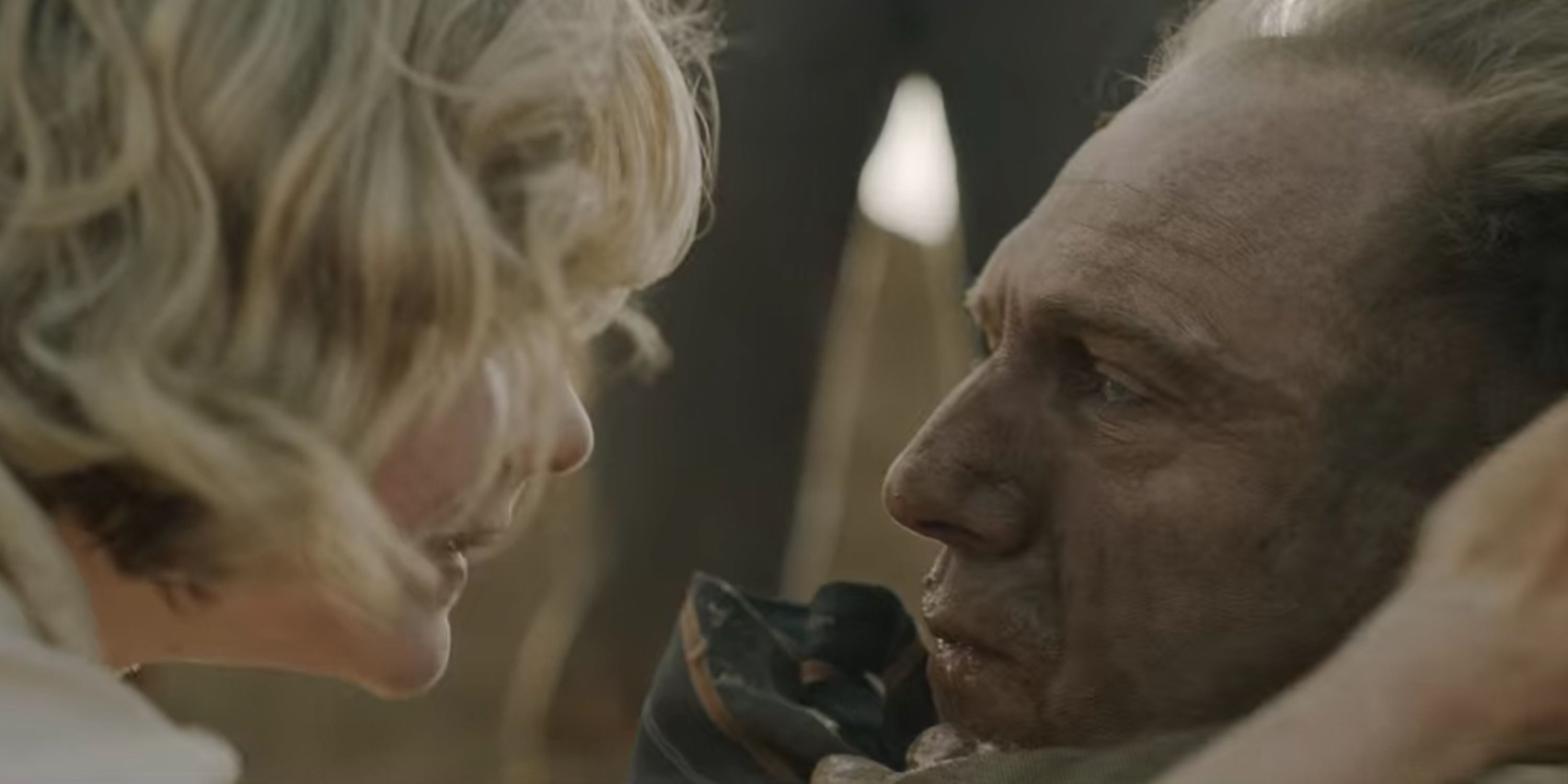WARNING: Spoilers for The Dig.
The Dig shows Basil Brown getting buried alive, so did that actually happen in real life? The 2021 Netflix movie was inspired by a 1939 archaeological project, but it's based on a fictionalized version of events in John Preston's eponymous 2007 novel. Incidentally, streamers may be curious about the authenticity of major events, certainly the moment when one of the main characters nearly loses his life while excavating.
Directed by Simon Stone, The Dig mostly stays true to real events. The storyline follows a real-life Suffolk native, Edith Pretty (Carey Mulligan), who hires an amateur archaeologist, the aforementioned Brown (Ralph Fiennes), for an excavation project. The duo ultimately unearths a 7th-century Saxon ship: a burial site full of treasure. The Dig chronicles Edith and Basil's collaboration with professional archaeologists such as Charles Phillips (Ken Stott), Stuart Piggott (Ben Chaplin), and Peggy Piggott (Lily James). For dramatic purposes, the Netflix film occasionally strays from historical truths for the sake of character development, such as when a pile of dirt buries Basil alive at the 16-minute mark.
In real life, Basil's burial accident didn't actually happen (per History Vs Hollywood), as there aren't any records of the event. For The Dig, the sequence thematically links to Edith and Basil's conversation about Howard Carter's 1922 discovery of Tutankhamun's tomb in Egypt's Valley of the Kings, and how the archaeologist stated that "Time lost its meaning." On a deeper level, though, it connects to the recurring themes of spiritualism and legacy, as Edith frequently worries about death and Basil believes that they are "part of something continuous." When Basil gets buried alive and then rescued, the moment establishes a powerful bond between the two characters, even though it's not historically accurate.
Overall, The Dig's portrayal of Basil seems on-point. The man did indeed work as an amateur archaeologist, though he didn't begin working on Sutton Hoo excavation in 1939, but rather two years prior in 1937. The movie condenses the real events to thematically align with a larger societal commentary about England's entrance into World War II. The Dig also incorporates the fact that Brown was an amateur astronomer, which is used to anchor the underlying subplots about spiritualism and legacy, with Edith's young son Robert (Archie Barnes) being symbolic of the innocence and wide-eyed wonder that still remains within each character prior to the war.
Fiennes' portrayal of Basil also appears to be accurate. For one, his appearance matches the real-life look of the subject, and the humble characterization matches descriptions of the amateur archaeologist. Fiennes was 56 years old during production, which aligns with Basil's age of 51 in 1939. As for the early-act burial scene in The Dig, the moment may indeed be fictional, yet it adds more narrative depth by underlining the spiritual bond between Edith and Basil. The immediate future may be uncertain, but the work will endure. The burial scene functions as the narrative anchor, as the life and death concept can be applied to various subplots, whether it's a couple worrying about being separated by war or a boy wondering about the great beyond, and what might happen after his mother's death.


